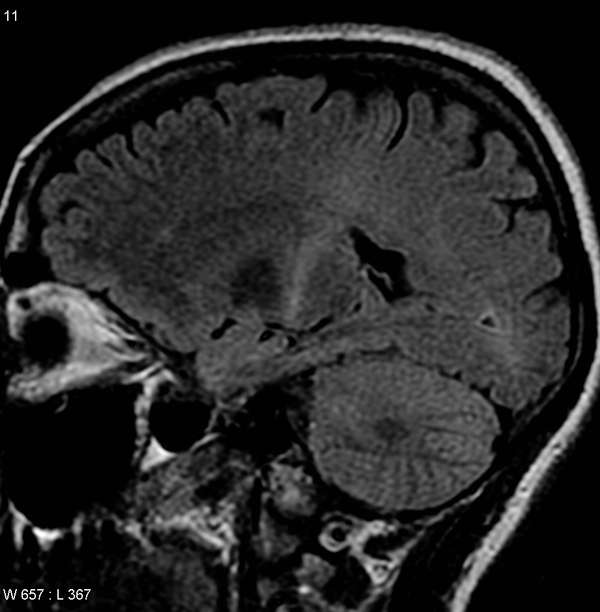Three “Remarkable” Studies Say Clogged Pores May Cause ALS; Drug Targets ID’d
 Three studies, analyzing in different ways the leading ALS gene, came to what is being called a “remarkably” similar conclusion: the most common form of ALS may be caused by clogged pores in brain cell nuclear membranes.
Three studies, analyzing in different ways the leading ALS gene, came to what is being called a “remarkably” similar conclusion: the most common form of ALS may be caused by clogged pores in brain cell nuclear membranes.
One of the studies identified two drug options that eradicated the pore-clogging. All identified druggable targets.
“These are the first studies to implicate altered nucleo-cytosolic transport [pore clogging] as a patho-mechanism in ALS (amyotrophic lateral sclerosis),” University of Wisconsin oncologist Randal Tibbetts, Ph.D., told Bioscience Technology. Tibbetts, uninvolved in the work, wrote a Nature column on two of the papers (both in Nature). “The findings are presently limited to the significant subset of ALS cases caused by” the C9 mutation. (That is, G4C2 hexanucleotide repeat expansions in the C9ORF72 gene).
Johns Hopkins University Brain Science Institute head Jeffrey Rothstein, M.D., Ph.D., told Bioscience Technology: “The C9 mutation is found in 40 percent of inherited ALS and FTD (fronterotemporal dementia).” Rothstein, senior author of the drug options Nature paper, said all the research applies to FTD, as well.
“This is the most exciting development of my career.”
The two Nature papers also showed that TDP-43, a protein known as key in ALS, appears mislocalized by the C9 mutation, says Jozef Stefan Institute biologist Boris Rogelj, Ph.D. “Importantly, the authors show this mislocalization can be rescued,” he told Bioscience Technology. Rogelj was also uninvolved in the work.
St. Jude Children’s Research Hospital Cell and Molecular Biology chair Paul Taylor, M.D., Ph.D., is senior author of the other Nature paper. He told Bioscience Technology the fact that the teams reached the same conclusion about nuclear pore disruption is “very powerful confirmation this is a central process.”
 Rothstein’s RanGAP
Rothstein’s RanGAP
Rothstein’s group found the C9 mutation produces malformed RNA molecules that clog pores in nuclei, especially when binding to the protein RanGAP. The clogging keeps proteins from entering.
Notably, the group also restored the protein flow with two drug candidates.
In FTD, brain cells degenerate, leading to problems processing language and emotion. In ALS, spinal cord and brain cells degenerate, leading to the immobilization of all muscles, and death.
Researchers have known—since the 2011 discovery, by two groups, of C9’s prevalence in ALS—the C9 mutation involves six nucleotides repeated thousandsfold. Odd-shaped RNA-quadruplexes result.
In 2013, Rothstein's lab did a screen using a C9 fly model. They identified 400 proteins in brain cells interacting with C9 RNA. RanGAP was identified as key. RanGAP helps ferry molecules out of cell cytoplasm into nuclei via the above pores.
For the new study, Rothstein’s lab tracked RanGAP in both a C9 fly model, and in cells made from C9 patient iPSCs (induced pluripotent stem cells). RanGAP bound to C9 RNA, and blocked the nucleus on the cytoplasm side. Proteins needing RanGAP to enter nuclear pores, couldn’t. (As noted, the team also saw a link to depleted TDP-43.)
The teams then analyzed autopsied brain tissue of ALS/FTD patients. These, too, showed clumps of RanGAP and C9 RNA stuck just outside nuclei.
In more fly and iPSC experiments, Rothstein’s team added an antisense oligonucleotide engineered to cling to C9 RNA—and keep it from clinging to RanGAP. The clogged pores reopened, restarting travel into nuclei. Toxicity vanished. Rothstein is developing drugs with Isis Pharmaceuticals.
Rothstein told Bioscience Technology: “This is already a cross-biology effect: both ALS and dementia.” Throw in the link to TDP-43, “widely implicated in brain disorders…this may go way beyond ALS.”
As both his oligo—and a small molecule—“completely fixed the toxicity,” he says the FDA may fast-track clinical trials if tests pan out.
 The second Nature paper
The second Nature paper
For the second Nature paper, Taylor’s group also found—via C9 flies, and ALS/FTD patient cells—-C9 RNA jams nuclear pore transport. But Taylor found the wayward RNA does this by binding proteins inside nuclei. Another difference: both nuclear import and export underwent RNA traffic jams.
“The major difference between our paper and the Rothstein paper is that ours had no bias,” Taylor told Bioscience Technology. Rothstein pursued the earlier observation that C9 RNA interacts with RanGAP. “While this is logical, appropriate, and faster, in this type of experiment one must always be concerned whether the initial assumptions are correct. It is hard to eliminate all doubt about the results.”
Taylor said, “We started with no assumptions. We captured the process of [C9]-related degeneration in a tractable genetic model, then we conducted a large-scale genetic screen to identify biological processes impacted by the ALS mutation [C9].” As with Rothstein, nuclear pore disruption was implicated, confirmed by patient neurons.
Taylor added his paper is first to use Drosophila “for a large-scale genetic screen—a very powerful approach—to give unbiased insight to the underlying mechanism of the most common form of ALS and FTD.”
Again as noted, Rolgej hailed the fact that Taylor, too, found a link between TDP-43 and C9. “Discovery of TDP-43 mislocalization—from nucleus into cytoplasm—as a predominant occurrence in ALS and FTD has provided a major change of perspective on these diseases,” he told Bioscience Technology. “The complexity of underlying processes that can cause TDP-43 proteinopathy has been highlighted by the discovery of [C9] and ground-breaking studies. However, none connected [C9] with the major pathology in patients: TDP-43 proteinopathy.”
Rothstein and Taylor “bring this connection closer. They show RNA from [C9] mutation can disrupt [nuclear pore] shuttling by binding to proteins driving this process.”
The third paper
The third paper, in Nature Neuroscience, looked at mutant dipeptide repeats (DPRs) generated from C9. This paper, too, bolsters the idea C9 works via pore jams. But while Rothstein and Taylor saw C9 DPRs, neither could tell if they caused toxicity.
Rothstein thinks not. Normal human proteins/peptides tend to come from RNA sense strands, he told Bioscience Technology, “yet with DPRs, peptides come from both sense and antisense. No one knows why. Labs generate different results.”
In the third paper, the team of senior author Aaron Gitler, Ph.D., a Stanford University geneticist, attacked the issue, genetically altering yeast to make proline arginine (Pro-Arg)—a DPR encoded by C9, found in ALS brains—without making Rothstein and Taylor’s odd RNA.
DPRs also evoked evidence of—repairable—pore jams. As this occurred without the odd RNA, he concluded Pro-Arg and other DPRs are key ALS culprits—not RNA.
A problem, Rothstein says: human relevance. Pro-Arg is generated off antisense. And Gitler used “excessive concentrations” of Pro-Arg in his yeast model. “In our endogenous systems, all the bad stuff is based on sense events. But Aaron’s artificial system got toxicity from antisense Pro-Arg. Is that relevant to human? We clearly showed that, at very low concentrations, RNA binds RanGAP, and is likely the initiating event. We can’t rule out a DPR,” but the third study’s clinical relevance is not a lock.
That study’s lead author, Stanford genetics post doc Ana Jovicic, Ph.D., told Bioscience Technology her team asked: “Which cellular pathways are perturbed with arginine-rich DPR expression, and can we find genetic modifiers of this toxicity?” They “focused on protein-associated toxicity only,” no C9 repeats, so all toxicity could be “attributed solely to the DPR expression.”
She added: “We have not investigated RNA-associated toxicity.” To study DPR toxicity “we performed unbiased genome-wide screens in yeast to identify genes that can modify arginine-rich DPR protein toxicity. We identified 76 genes that modify toxicity when overexposed, and/or deleted.” A result: like Rothstein and Taylor, they saw a “striking enrichment” in nuclear pore transport genes.
Is her model physiologic? She said: “Both sense and antisense are expressed in humans.” Her group used Pro-Arg, in addition to the sense-strand DPR glycine arginine (Gly-Arg), as it robustly “elicited toxicity and neurodegeneration in mammalian cells and Drosophila.”
Rothstein and Taylor did not find DPR toxicity, but “we do not know the toxicity-causing levels in human ALS,” she told Bioscience Technology. “No one has done experiments. Our screen identified a network of modifiers of Pro-Arg toxicity, including a large group of genes involved in nucleocytoplasmic transport and ribosome biogenesis and function, pathways dysregulated” in C9 cells.
All together
Tibbetts told Bioscience Technology all three used “genetically tractable model organisms” to probe C9-prompted neurodegeneration: flies (Rothstein and Taylor) and yeast (Gitler). Taylor and Rothstein showed C9 expression in flies “caused neurotoxicity. Then they used different approaches to identify genes that contribute to this toxicity. Taylor used an ‘unbiased’ screen of thousands of different genes to identify those that worsen or rescue C9 toxicity.” Rothstein used a "`biased’ screen of a handful of genes their previous data suggested might be involved in [C9] toxicity.” Both showed that mutations in nuclear import genes “worsened neurotoxicity in[C9] flies, though the studies generally identified different genes.” Taylor paper also implicated defects in nuclear export as a toxicity mechanism, a potential “point of discordance.”
Tibbetts said neither Taylor nor Rothstein “addressed the fundamental question of whether [C9] exerts toxicity through RNA or protein-dependent mechanisms.” C9 produces five DPRs, including Gitler’s Pro-Arg and Gly-Arg, “known to accumulate in C9 ALS patients. The Gitler paper directly addressed the toxicity of DPRs in their yeast model. They expressed poly Pro-Arg or Gly-Arg and showed that both DPRs caused toxicity in yeast by blocking yeast growth. They then carried out their own unbiased genetic screen to look for genes that reduced toxicity of poly Pro-Arg, the most toxic DPR in their model.”
Tibbetts said that, “remarkably,” mutations in nuclear pore import genes worsened Pro-Arg toxicity, just as with Taylor and Rothstein, despite “completely different” approaches.
He said there is clinical “potential” in all three, “but I would not characterize the clinical leads as strong—-yet.” If C9 causes “a general defect in nuclear protein import, as suggested by all three, then drugs that enhance nuclear import, or inhibit nuclear export, might show therapeutic benefit in patients harboring [C9].” Rothstein offered “proof of principle of this by showing that a small molecule nuclear export inhibitor mitigated neurotoxicity of [C9] in Drosophila. Some of these inhibitors—KPT-276--—are in clinical trials for cancer, and demyelinating disease. Inhibitors targeting ‘inhibitors’ of nuclear import could also find utility.”
The bigger question “is whether nuclear import defects contribute to the pathogenesis of sporadic ALS. This is being looked at by multiple labs. If the answer is ‘yes,’ one can imagine modulators of nuclear import might emerge as a major therapeutic avenue in ALS. No doubt such drugs will be given a hard look.”
That Gitler's model is less physiologic matters, Tibbetts thinks, “only in that the yeast model will not be used to test preclinical therapeutics. I think the model is quite relevant, assuming DPRs are important, as they may very well be.” Rothstein’s IPSCs —and “better yet,” C9 mouse models— “will be key for preclinical testing. Even the fly data will need to be confirmed in mouse.”
Tibbetts thinks it “does not matter which strand DPRs are produced from, even though normal proteins are translated off the sense strand. The Rothstein lab seemed to see toxicity only from the sense strand. I still think it’s very much an open question.”
But Gitler’s “excessive concentrations" of Pro-Arg “could be an issue. A recent paper reported DPRs are very hard to detect, and typically absent in sporadic ALS nervous tissue. In contrast, TDP-43 aggregates were common. So, whether DPRs are produced at a sufficient level to be relevant to toxicity in the human ALS setting is unclear. The DPR over-expression data could be a canard.”
He agreed Rothstein’s oligo and small molecule drug candidates eradicated toxicity in his models. The oligo reduced expression of C9 RNA, “eliminating toxicity at its source. The export inhibitor theoretically works by increasing the time key nuclear proteins spend in the nucleus, perturbed in C9-ALS.”
Bottom line
Are C9 DPRs or RNA relevant? Sense or antisense? All three disagree on details. But there is “bottom line” agreement, says Rothstein: “Nuclear pore transport is effected.”





